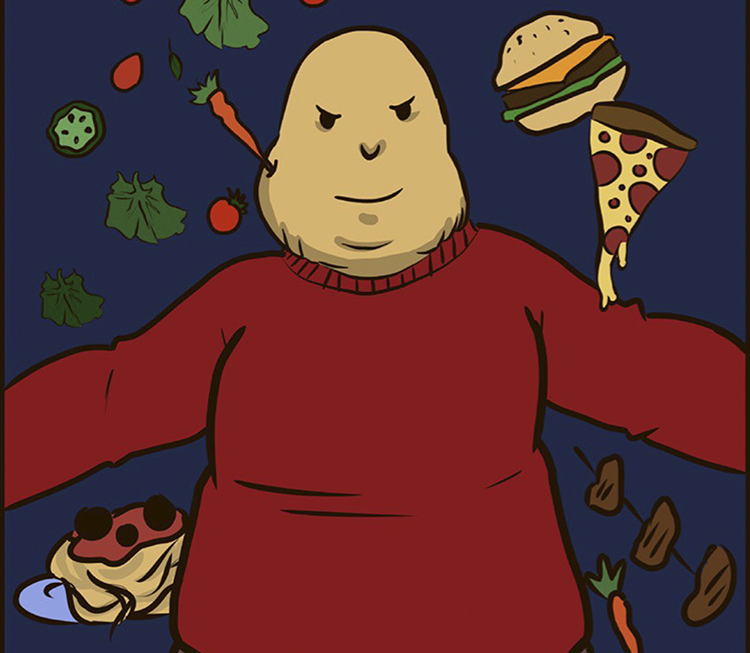The dining hall, infamous for its scarce array of options, works against those who strive for a healthy diet.
With most students attempting to evade the dreaded freshman 15, places like Sutter Dining and the restaurants downtown make this a difficult task. The freedom to eat pizza and pasta at every meal is incredible until clothes begin to fit too tightly.
One important thing to realize is the freshman 15 is a myth, considering that not every first-year student gains 15 pounds. In some cases, people don’t gain any weight at all. However, most students do gain about five pounds and continue gaining weight throughout their college career, because of high carb diets and poor eating habits.
Anyone hoping to avoid carbs while eating at Sutter Dining is doomed to starve unless they do some knit-picking. There is a way to eat healthy with a campus meal plan if you’re willing to do the work.
The easiest way to prevent only eating junk at Sutter is to avoid overeating sugary food or anything that is mostly made of fat. Students consume up to 30 percent of their calories from fat intake according to the National Center for Biotechnology.
Since most students don’t really look at their caloric intake for the day, this means they could be consuming a lot more than they realize. Since Celestino’s is conveniently located near campus, many students will consume several slices of pizza as a primary meal for that day.
One slice of pizza, in general, contains 88 calories from fat or 15 percent of a person’s recommended daily value according to CalorieKing. This would not be terrible if students were getting enough vegetables and exercise.
People should be eating about two cups of fruit and three cups of vegetables according to the Stanford Medicine website. Along with not eating healthy, 80 percent of students also do not get enough exercise according to Fitness.gov.
For those who are lacking on their vegetable intake, the easy move would be to swarm the salad bar. Often times, spinach leaves are offered as well as the typical mixed greens. Veggies and proteins are offered as salad toppers, as well.
It’s easy to whip up a delicious leafy meal, and it’s even easier to make it tasty. Though dressing isn’t always the healthiest, in moderation, it’s the cherry on top of the perfect salad.
Although eating salads and fruit can create a steadier diet, students also need to take advantage of the WREC. Doing 30 minutes of light exercise every day is enough to promote a healthy lifestyle, but running to class usually doesn’t meet that requirement.
Once in a while, Celestino’s is the most convenient thing, and most people can’t make it to the gym every day. Trying to stay on a healthy track and not eating out all the time or choosing not to work out at all is what students should be focused on.
It isn’t the easiest thing, but it’s doable. Staying away from fatty foods and doing regular exercise can help students avoid gaining weight in their first year. It can also help by keeping students healthier and possibly saving money from not consistently eating out.
Kyra Stemplinger can be reached at [email protected] or @theorion_news on Twitter.









